by Bill Poole | Sep 9, 2024 | Sales, Strategy
The Before Picture
Ashton Solutions provides IT strategies and solutions to small to medium-sized businesses across the Greater Cleveland region and the U.S.
Things were humming along at Ashton with a steady 12% growth rate, but that pace was starting to slow down. The company mainly worked with clients with between 10 and 100 employees, but no one could really agree on what an “Ideal Client” looked like. Without a clear picture, the sales team ended up chasing every lead that came their way, and everyone got a proposal, even if the prospects weren’t the best fit. Not surprisingly, only about 25% of those proposals turned into actual business.
This scattershot approach was wearing them out. Without a solid sales process or a clear path for clients to follow, the sales, marketing, and delivery teams were often out of sync. It was like everyone was playing a different tune, and it showed. The lack of consistent revenue processes made finding their rhythm and keeping the business growing tough.
The Plan
Ashton Services’ EOS Implementer, Kimberly Dyer, connected the Ashton leadership team with Convergo for help. The first step was to align everyone on the Ashton Ideal Client. Once that was clear, the next step was to refine their Proven Process for two reasons:
- To drive clarity in communications with prospects and clients about where they were and where they were on their path to value.
- Internally align so everyone understands their role in delivering an amazing experience for ideal clients.
The Ashton Way, their Proven Process, was the foundation for creating a simple, cross-functional Playbook that helped the team guide prospects and clients through a well-defined journey. Everyone was finally on the same page with consistent sales and marketing language, process rigor, and terminology across the Ashton Way.
This plan was not just about closing more deals; it was about making sure clients had a great experience from start to finish. The front end of the Proven Process is the sales process, so the next big step was to build a sales process with the new lens of an Ideal Client. One big change was that they started qualifying prospects against their Ideal Client Profile. So, instead of chasing every opportunity, they focused on the ones that were the best fit for the delivery team and the business itself. Now, when they send out proposals, they are going to prospects who would benefit from their services and not be a burden for their delivery team.
Convergo worked with Ashton on each stage of the Ashton Way, creating a cross-functional Playbook. The Playbook ensures the Ashton team knows exactly where the prospect/client is in their journey and their role in delivering a great experience. The Playbook is also used to enhance the onboarding and training of new team members.
The Results are In
The difference was huge. Since we started working together, Ashton Services has seen its annual revenue jump by 63%. They also started working with larger clients—businesses with 50 to 250 employees who had larger budgets and more complex needs.
But it wasn’t just about the money. The alignment enabled them to synch their messaging so that sales and marketing messages were consistent. The team was working together like a well-oiled machine. The person who used to spend all their time cranking out proposals suddenly had a lot more time on their hands, which they could now use for bigger-picture strategies.
Jim Abbot, the VP of Client Solutions at Ashton, said: “We get to ‘no’ faster, and we’re not chasing clients that are too small… We’re saving a lot of time by not actively chasing the wrong people.” With everyone following the same client journey, the whole company was moving in the same direction. They even reduced their sales team from three people to two, but thanks to their new focus on Ideal Clients, they were getting better results than ever. The sales process became consistent and easy to follow, and everyone started speaking the same language.
Ashton Services isn’t just growing again—they’re doing it in a way that feels right for them. And that’s something any small business owner can appreciate.

by Bill Poole | Aug 5, 2024 | Sales
The Proven Process tool (aka Client Journey, or Client Experience) is an under-utilized tool. As many have said, the Proven Process is the “Front Stage.” These are the stages that your clients navigate with your business to maximize the value they will realize.
For differentiation, on the other side of the coin, the “Back Stage” is where you find your Core Processes, which are the internal processes in place to ensure your client seamlessly navigates their journey across your Proven Process. Especially for services-minded businesses, the Proven Process can be the most tangible tool to communicate how your clients will maximize the value delivered.
The Proven Process is a phenomenal sales tool. Here are 5 ways you can use your Proven Process to drive more sales:
- Validate your Proven Process
- Align around your Proven Process
- Use your Proven Process
- Measure your Proven Process
- Improve your Proven Process.
Below is some insight on all 5 of these.
Validate Your Proven Process
When was the last time you asked your IDEAL prospects and clients how they felt as they navigated their experience with your business? Gathering external feedback ensures you are focused in the right areas when assessing needs and communicating value in your proposals. This improves close rates for Ideal Prospects.
Here are some ways to validate your Proven Process:
- Engage a third party to talk with your clients. At worst, you will confirm what you think you now know. But you will likely be surprised by what you learn!
- Send surveys to clients to gather their feedback on different stages of the proven process as appropriate.
- For businesses with very high customer lifetime value, a focus group can provide a lot of collective insight that you can use to improve delivery of services
Align Around the Proven Process
Your business should be aligned around your Proven Process from your client’s perspective. If all team members have this foundation, then all understand their role in ensuring that prospects and clients have a great experience. When team members understand what prospects and clients have done and will be doing as their journey transitions from department to department, it is extremely helpful to prospects, clients, and your team.
Here are some ideas to align around your Proven Process:
- Create a brand around it and launch it internally. Hang posters on the wall, including it in prospect/client-facing communications.
- Use your proven process to add context to any prospect/client-facing processes (sales, marketing, client delivery).
- Ensure the handoff from marketing is a seamless process, over-communicating and leveraging video so clients know where they are in your process and what is next.
- Set the client delivery team up for success by getting them what they need to deliver excellent service.
Use Your Proven Process!
A lot of proven processes are created at the launch of EOS and then decay on the V/TO. Don’t let this happen to you!
Here’s how to use it:
- Use it to communicate the path to value throughout the Sales Process. Prospects and clients enjoy clarity, and showing them where they are on a visual level can be extremely helpful.
- Closing tool – map how your client’s compelling event aligns with your proven process to ensure they know what is involved in them getting where they need to go.
- Qualifying tool – if a prospect doesn’t seem to fit with your proven process, then it may not be a good client.
Measure Your Proven Process
Most scorecards consist primarily of internal KPIs and metrics that do not measure how your clients navigate your business. Adding proven process KPIs to your scorecard helps you understand where to improve. These KPIs are not likely weekly scorecard metrics but are impactful to reflect back on a quarterly or monthly basis.
Here are some ideas to measure your Proven Process:
- Lots of stages are cross-functional. Measure all stages on your Leadership Scorecard and carry down the metrics that each department affects.
- Measure conversion rates. This is the percentage of prospects or clients who move to the next stage of the Proven Process. This idea might not apply to all stages, but it works for many of them.
- Measure your clients’ satisfaction. Understanding your client’s perspective on how they felt provides immediate actionable insight. Stages like onboarding are great opportunities to send clients a short survey to rate their experience and gather subjective feedback.
- Measure time in stages of the Proven Process where possible. This can have financial and client satisfaction implications. Measuring the time spent in a stage like onboarding allows you to improve internal processes to streamline the process and help your clients achieve results quicker.
Improve Your Proven Process
“To improve is to change; to be perfect is to change often.” Winston Churchill
Once your Proven Process is implemented and you are measuring it, get it into a continuous improvement cycle!
Here are some ideas on improvement:
- Put it on your quarterly agenda to reflect back on metrics, pick a stage that needs to be improved, and set a cross-functional rock to improve it.
- Improve it in your normal Traction meeting cadence. Some insight gathered presents opportunities for immediate action and improvement. For example, a client survey might include a suggestion for something that can be improved with ease.
Download our Proven Process Checklist for more info.

by Bill Poole | Oct 26, 2023 | Sales
It’s no secret that a business with documented processes will sell for more than one that works from the hip. Sales is one of the last frontiers of process implementation and adherence for entrepreneurial businesses. One reason for this is that sales reps naturally resist process. The other side of the coin is that implementing a sales process can significantly impact a business’s value.
There are many ways that a sales process benefits an organization, both internally and externally. From a business owner’s perspective, there are four ways that a mature sales process can increase the value of a business:
- Grow revenue by winning more
- Predictability
- Growing assets
- Differentiation
Before we look at each of these further, let’s explore a “mature sales process”.
What is a Mature Sales Process?
Two process components are the steps and the metrics to measure effectiveness. Over time, the processes should evolve. Steps are added, edited, or changed to improve the performance of the metrics. Or, the metrics are changed to drive the desired business results.
So, a mature sales process is one that:
- Is documented and followed by all (FBA)
- Has evolved to the point where there is a degree of confidence that the proper steps and metrics are in place
- Is a tool that leadership uses to manage reps and ensure they are taking the steps necessary to win
Win More
When properly crafted with supporting tools, reps are less likely to skip steps of the sales cycle that would increase their chances of winning. For example, we often see sales reps shortcutting the discovery process. It is not uncommon for a sales rep to present the solution before spending enough time uncovering the specific challenges and the impact of those challenges on the prospect’s business.
A documented process with a tool like a simple Discovery Checklist can ensure that reps do a thorough job of assessing needs. Then, their proposals are much more likely to hit the mark.
So, the result is a higher close rate, more revenue, and higher valuation.
Predictability
Accurate tracking of the sales process in a pipeline tool helps a leader or business owner know what to expect in the coming months from a performance perspective. This is particularly relevant for a project-centric business that might have a lot of revenue fluctuation.
Looking at the pipeline to know what is coming can be very helpful for business planning. Predictability drives business value.
Growing assets
Simply stated:
- Assets drive business value
- A sales process is an asset
- Having a sales process as an asset increases the value of a business
That one is pretty cut and dry!
Differentiation
The last way that a sales process drives business value is in differentiation. This is particularly relevant for businesses selling commoditized products or services that are hard to differentiate. So, the experience that a customer has with the business can be the differentiator.
Implementing and following a tight sales process that looks at all customer interactions can improve the customer experience. This might be the difference in winning or losing for businesses that are otherwise hard to differentiate.
Conclusion
If the plan is to sell the business someday, then it seems like an obvious step to implement a sales process. These benefits increase the value of a business when it is sold and can help you realize significant benefits along the way.
The good thing is that a sales process doesn’t have to be complex! The Pareto Principle applies to the sales process! When is the right time to implement a sales process for your business?
Check Out these Additional Resources:

by Bill Poole | Aug 22, 2023 | Sales
Not all that long ago, the decision to implement a CRM involved huge trade-offs. A CRM that was very functional from a sales standpoint had very limited functionality for the operations/customer service team. Customer service applications lacked sales functionality. Marketing automation applications were stand-alone and did not inherently integrate with the CRM.
There will always be trade-offs when making decisions, but CRMs have significantly evolved to enable functionality for the whole organization. As you might imagine, the benefits for each department are different.
Let’s dig into each department and look at some of the benefits that modern CRM offers today’s business.
Sales
The CRM benefits for sales make it a lot easier to convince the sales team to make a CRM change than it used to be!
- Improved win/lead conversion rates – That’s the big idea, right?
- Team productivity – Automation like templated content enables you to make more touches in less time while controlling the message.
- Accurate Forecasting – When configured and used correctly, forecasting is simple!
- Rep Development- Reporting of the right metrics helps leaders take the right actions to develop individual reps.
Marketing
There was a time when marketing folks used to buy their own technology. Those days are gone:
- Improved lead flow – Segmentation allows you to hone and improve your message, and downstream, closed-loop reporting helps marketers know which tactics and messages are turning prospects into clients.
- ROI – Closed-loop reporting enables attribution to help with this age-old challenge
- Share of wallet – Marketing has always marketed to prospects. Managing clients in the same system allows you to market to your clients as well.
Client Success
Stand-alone client/customer success teams limited the visibility of the sales and marketing touchpoints of the prospect journey. No longer!:
- Customer/Client Sat – Having a 360-degree view of the client puts actionable insight in front of your Customer Success team.
- Productivity – Enhanced communication channels and built-in automation enable you to meet customers where they are and provide the correct response.
Admin/Finance
Integration and inherent back office functionality have recently brought admin and finance to the CRM party. How do they stand to gain?
- Billing/payment integrations and streamlined processes – Many CRMs go beyond the proposal and integrate contracting into the CRM.
- Billing accuracy – Automation reduces errors!
- View of history – Visibility marketing, sales, and client success interactions help support your AR team.
IT
Not only do IT teams support CRMs they also provide functionality to them.
- Departmental productivity/costs – Most CRMs reduce administrative reliance. Much of the admin is enabled at the departmental level by the users that know what they need, reducing the burden on IT.
- Security – New CRMs need to provide levels of security that were not previously imagined in old CRMs.
- Integration – New CRMs need less integration because of their Improved functionality. When integration is needed, new CRMs provide a lot more flexibility.
- Mobile enablement – Today’s mobile workforce enables IT to give users the access that they need on the go.
Leadership
A fully functional CRM is a huge asset from a strategic perspective:
- Business planning – When the CRM is humming, it is much easier to gauge future performance and to support strategic decision making.
- Cross-functional Alignment – When departments use different applications, there is less of a need to be aligned. However, that also increased the need for someone to pull everything together. A fully functional CRM promotes cross-functional alignment.
Conclusion
The evolution of CRMs has been a massive enabler to the success of a business that properly takes advantage of the opportunity. That said, the decision for the right CRM is more complex.
Ensuring that all departments are engaged when shaping your CRM requirements is imperative. When done correctly, implementing the right CRM can be a substantial competitive advantage, improving communications, streamlining processes, enabling data-driven decision-making, and enhancing customer experiences.
Continue to read more about CRMS:
Make sure to download your “5 Steps for Scaling Sales and Growing Revenue” ebook.
#ModernCRM #EmpowerYourOrganization #DriveSuccess #DataDrivenDecisions #StreamlineProcesses #CrossDepartmentalEngagement #Convergo

by Bill Poole | Aug 22, 2023 | Sales
Unlocking Growth for Entrepreneurial Businesses by Overcoming Sales Barriers
Sales is a barrier to growth for a lot of entrepreneurial businesses. Understanding how to break through that barrier can be very challenging. How can you do it? Some common thoughts that go through your mind might be:
- Do I have the right people in place?
- Are we taking the right approach?
- Do I need to document my processes?
- Do I need to improve my scorecard?
Many of these things can be helpful, but acting on these questions may lead you down the wrong road because you may not be addressing the root cause of the problem. Many times, the challenges are more foundational.
Three questions you should ask yourself before acting on one of those questions are:
- Do I clearly understand my ideal client and the outcomes they want from their business?
- Are my uniques/differentiators/value proposition aligned with the outcomes that my ideal clients want?
- Is the path to realizing our value clear for my ideal clients?
Let’s explore these questions in more depth so that you can have a better understanding of what the root cause of your challenge might be.
Do I have a clear understanding of what my Ideal Clients want?
If your ideal client profile is too broad, it can weaken your message and make it challenging to reach your entire market. Honing your Ideal Client Profile (ICP) has two huge benefits:
- It strengthens your message – a tighter ICP makes it easier to create a message that resonates.
- It allows you to be more effective with your limited sales and marketing budget – simply stated, investing the same amount on a smaller pool of more qualified prospects that your business is more optimized to serve yields better results.
Your ICP should include the high-level outcomes that Ideal Clients want from their business. This helps you align your offerings and also create messaging that hits the mark.
Are my differentiators/uniques aligned with the outcomes that my ideal clients want?
The ideal state is that you have some uniques or differentiators that directly align with your Ideal Clients’ desired outcomes. In its purest sense, if you uniquely position your services to satisfy your ideal clients’ desired outcomes, sales, and marketing can be like shooting fish in a barrel.
This is a lot harder in businesses that operate in a competitive market. The EOS™ 3 Uniques concept states that, while some companies might share a unique or two, the ideal state is that no other business offers all three.
If you are in a market that is challenging to differentiate, then clearly connecting your services to your Ideal Client’s desired outcomes might be the best thing you can do to differentiate.
Is the path to value clear for my ideal clients?
The path to value has a lot of interchangeable terms:
- Client Journey
- Proven Process in the EOS world
- Client Experience
Regardless of what you call it, the keys to leveraging the concept to win more are the same:
- Tightly integrate your uniques into the journey
- Make it clear how your Ideal Clients navigate their path to value
- Brand your Client Journey and use it as a tool to connect with your Ideal Clients
As Donald Miller says, “… if you confuse, you lose.” Clearly communicating your Ideal Client’s path to value will not only help you speak to prospects and clients, it will also help you align your team to deliver the journey that you desire.
Conclusion
This should help you better understand the root cause of your barrier to sales. If you are able to resolve these questions with good answers, then the next step is to look at your systems and people and build your growth assets.
Read more on how to identify your ideal client profile.
Make sure to download your “5 Steps for Scaling Sales and Growing Revenue” ebook.
#entrepreneurialbusiness #salesbarriers #idealclient

by Bill Poole | Aug 21, 2023 | Sales
Two Types of CRMs
There are two types of CRMs: vertical and horizontal.
Vertical CRMs are designed to meet specific industries’ unique needs and challenges. They provide more targeted solutions to businesses operating in those sectors, with features and functionalities tailored to their particular requirements. Examples of vertical CRMs include healthcare CRMs, real estate CRMs, and legal CRMs. These CRMs may also provide industry-specific integrations that streamline workflows and improve productivity. However, if all businesses are different, integrating and optimizing for your business may require more effort for a vertical CRM.
On the other hand, horizontal CRMs are designed to work across different industries, providing more functional and flexible solutions. They offer a more comprehensive range of features and functionalities that are more customizable to suit your business needs. Examples of horizontal CRMs include Salesforce, HubSpot, Monday.com, and Zoho. While they may not be ready to roll out of the box, horizontal CRMs provide more flexibility to customize and wrap around your unique business like a glove. Additionally, they may provide more visibility across your entire business.
Trade-offs
A lot of the decision process for a CRM comes down to trade-offs. When choosing between vertical and horizontal CRMs, consider your business goals, the size and complexity of your business, and the level of customization you require. You should also evaluate the CRMs compatibility with your existing tech stack, including marketing automation software, social media management tools, customer service software, and even back-office applications. Your new CRM may enable you to retire some of your outdated tech.
It is extremely important that all departments are involved in developing requirements for a new CRM as all stand to gain from a functionality perspective. After your requirements are defined, it is time to weigh the trade-offs. Consider cost, ease of use, and scalability when comparing your CRM options. Some CRM systems are a lot more expensive than others, so understanding the trade-offs can be very challenging.
Conclusion
In conclusion, there is a lot at stake, so ensure you look at the decision holistically before you decide on a horizontal or vertical CRM.
Read more on how CRMs can increase revenue here. Make sure to download your “5 Steps for Scaling Sales and Growing Revenue” ebook.
#CRMInsights #BusinessTech






